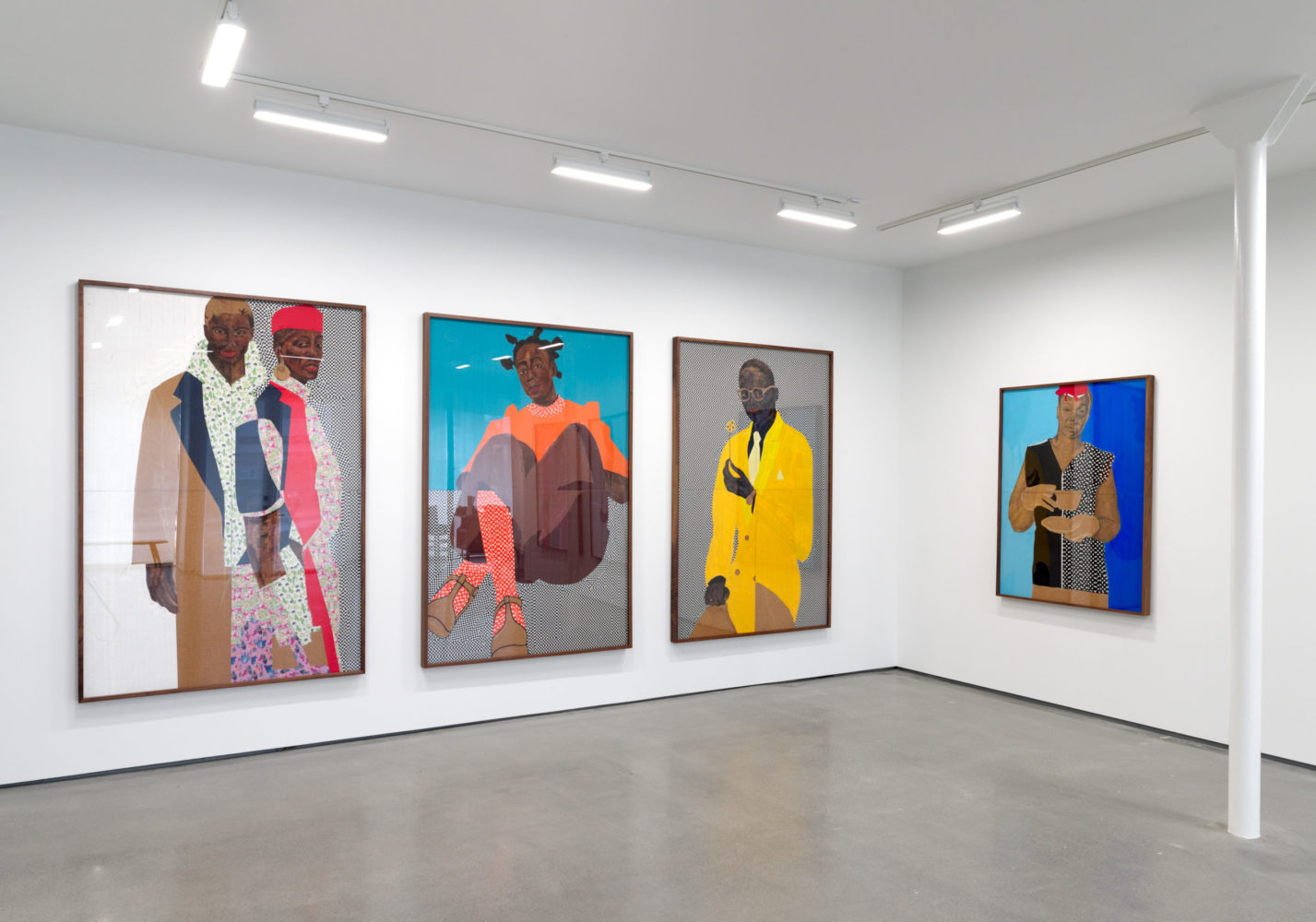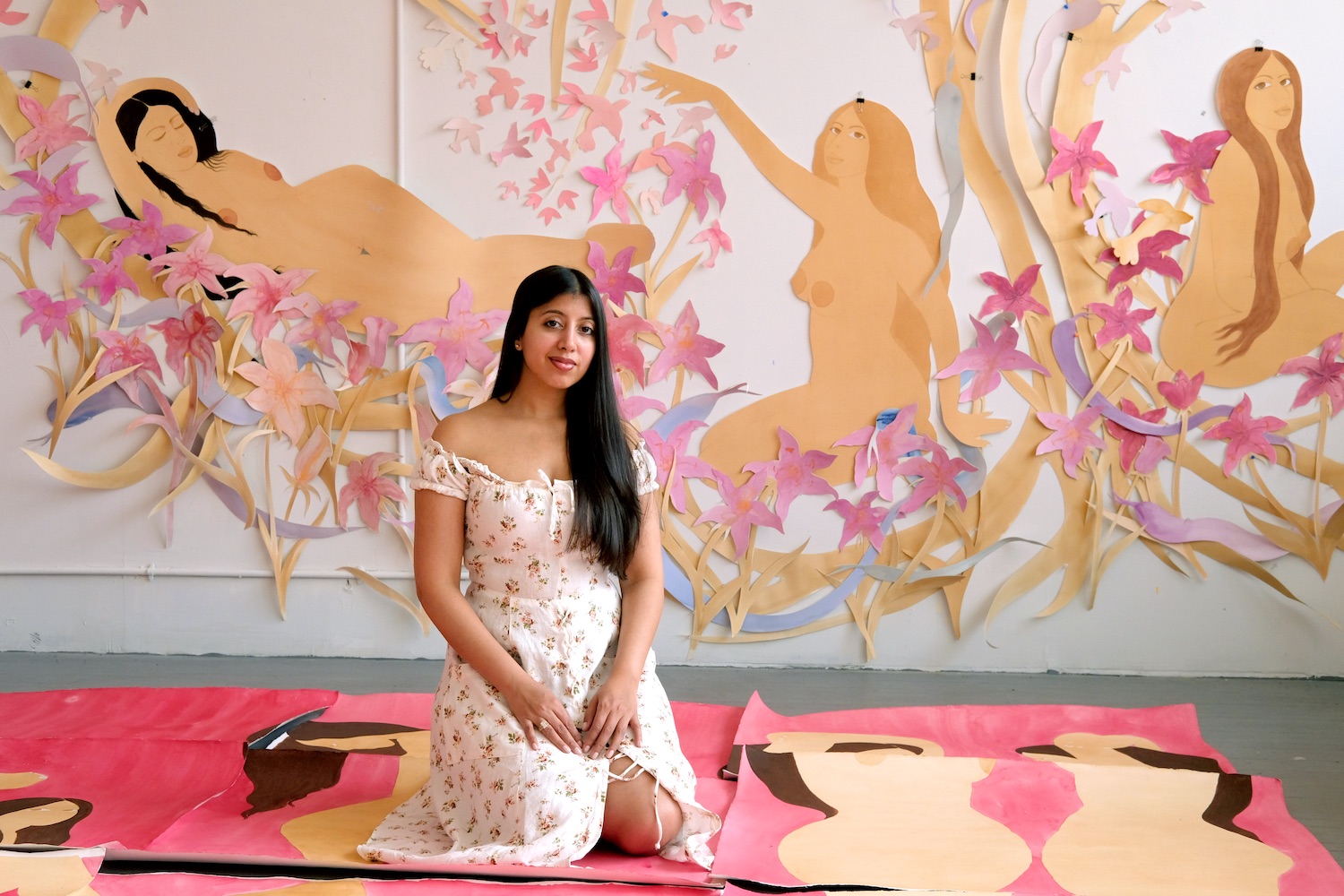Serge Attukwei Clottey is known for using plastic Kufuor gallons as a medium in his artwork—a concept which he has coined as “Afrogallonism.” Looking at the effects of the colonization in Africa (of which the plastic, oil-bearing jerrycans are a product), Clottey utilizes the commonly found containers in his art as a means of exploring issues like global warming, water scarcity, and other environmental problems.
In his current installation at Desert X, The Wishing Well, viewers saw the yellow plastic from the jerrycans composing the thousands of tiny, tile-like units that composed the giant fixtures situated in the Coachella Valley. Combining installation with facets of performance and photography, Clottey expanded his narrative to look at ideas of our shared future from the gaze of the desert landscape, which greatly depends on water supply for the livelihood of its inhabitants.
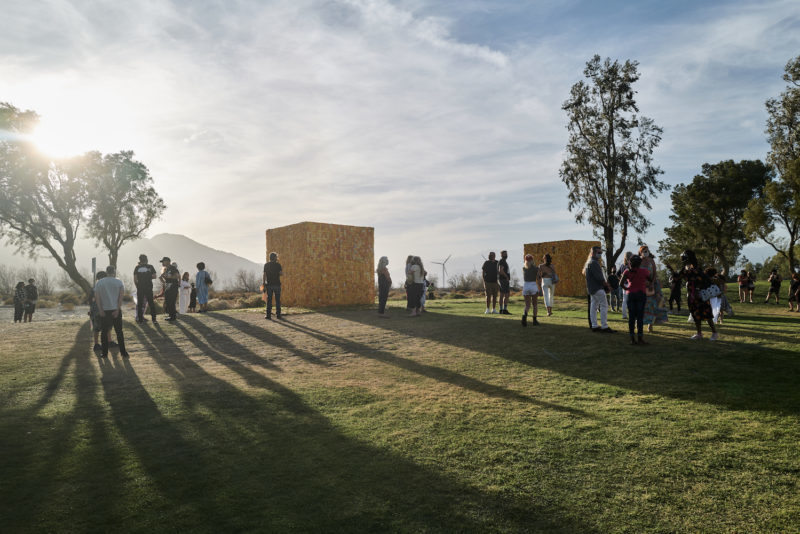
Installation view of Serge Attukwei Clottey’s “The Wishing Well” at Desert X, courtesy of the artist.
More recently, the artist’s exhibition “Beyond Skin” opened at Simchowitz Gallery in Los Angeles. Open through May 8, the show centers a series of portraits, which the artist has made taking cues from mid-century photographs from the coast of West Africa. With this in mind, Clottey explores ideas of identity construction, recreating existing images of names like Chadwick Boseman as well as lesser known individuals, in two formats—duct tape and oil on cork, or tondo charcoal drawings.
To learn more about his new body work, Whitewall caught up with the artist.
WHITEWALL: How did you first conceive the exhibition “Beyond Skin”? Was it a natural progression to use devices like fashion, gender, and sexuality to look at constructs of identity or something you turned to consciously?
SERGE ATTUKWEI CLOTTEY: Fashion, gender, and sexuality have always been keen in my practice, and looking at it from African traditional perspectives, it describes [how] our historical relationship with Europeans settling on the coast of Africa has conspired through construction of identity, so it was natural progress.
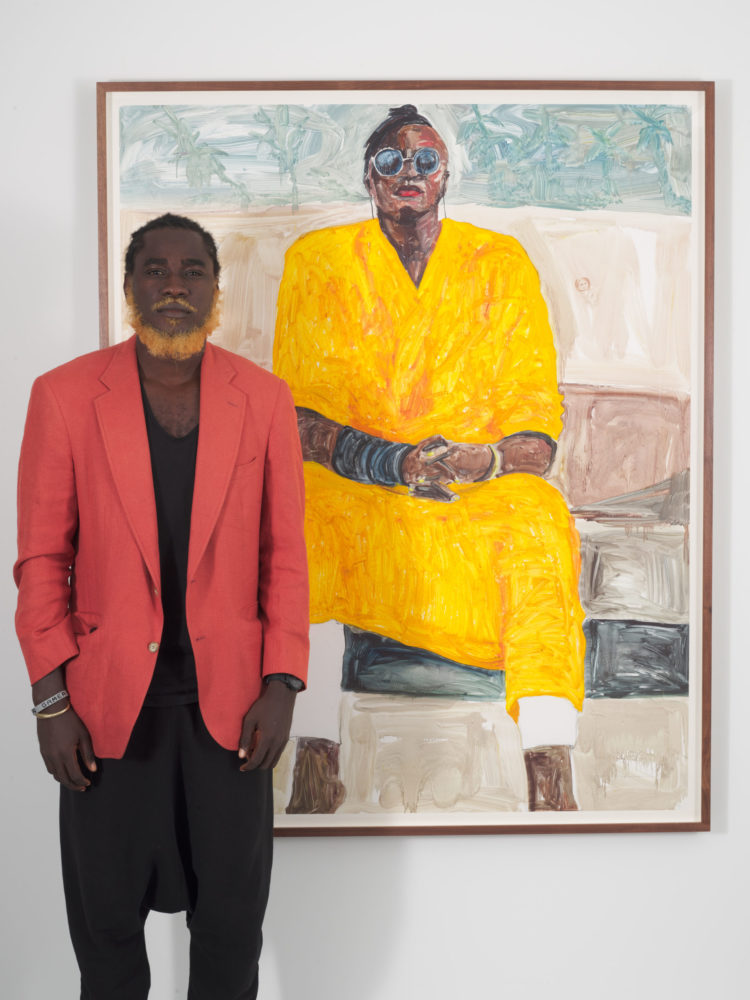
Serge Attukwei Clottey pictured with “Feeling cool,” 2020-2021, courtesy of the artist and Simchowitz Gallery.
WW: What prompted you to update mid-century photographic styles for contemporary art? What types of visual elements make these portraits seem dated versus new?
SAC: I was prompted through the work of James Barnor, Seydou Keita, Malick Sidibé, and Youssouf Tata Cissé with the exceptional lengths to bring out the beauty of subjects and the brilliant patterns of their backdrops as a particularly effective foil. The work around ideas of image making and identity construction.
WW: Tell us about your installation The Wishing Well at Desert X. What role do the plastic Kufuor gallons play here and how does the narrative created with your “Yellow Brick Road” series continue in the context of the Coachella Valley?
SAC: I think the new theme I have realized is narratives of architecture and its interaction with space. [With] Coachella Valley as an exhibition space I have built on ideas reimaging mobile temporary rooms with plastics tapestry. So I’m looking to consider that for a futuristic project to develop urban communities within the country and beyond.
Until these materials have outlived their use in the people’s homes and are discarded, they are literally part of the lives of the people who use them. They are therefore an embodiment of many personal stories. Thus, every gallon has a story. When they are discarded, where they end up gives them different realities and meaning. And these realities begin with who collects them, and where they end up.
I believe people literally throw a part of their personal stories away when they discard these gallons. Also, it is necessary for them to throw away the old and worn out ones and make room for new and strong ones. When this happens, we then begin to ask questions about how and where these gallons are disposed of and end up. So In this project, I employ two mediums (performance and photography) of my practice to explore the realities of the gallons by personifying them.
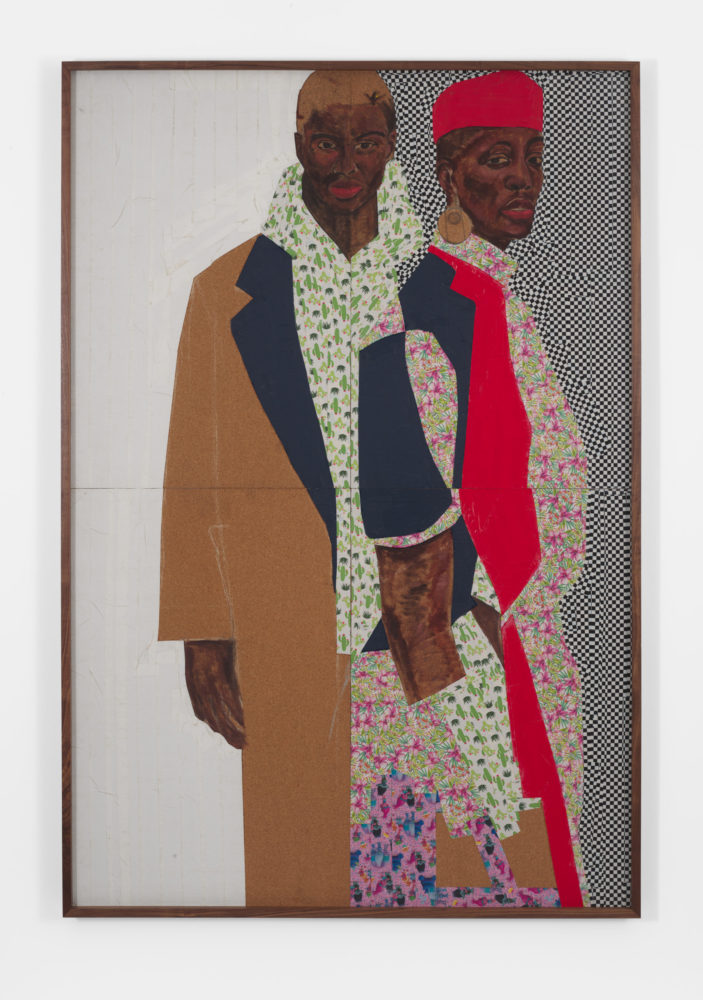
Serge Attukwei Clottey, “Fashion icons,” 2020-2021, courtesy of the artist and Simchowitz Gallery.
WW: Tell us about environmental responsibility and sustainability as facets of your artistic practice. How would you say your work relates to the greater discussion of sustainability happening across the world today?
SAC: It demands social justice by exposing environmental problems in today’s society. It inspires the human spirit by calling people to action. It builds the foundations for an open society by imagining a community where we conserve, recycle, and respect. The key to this all is education. If the youth learn about the issues in school, and if the government instills environmental education as a norm, then the people can begin to make changes in their lives.
Climate change is of particular concern in Ghana, but it is an issue that affects the entire planet. I have already been able to have an impact locally by connecting with the youth in alleys and on slum corners. I have discussed my project with communities across regions in Ghana, an organization where I volunteer with at-risk youth to help them develop their skills in art and creativity. Yet my work does not stop there. Eventually, I hope to be an ambassador not just to my local community, but to the world.
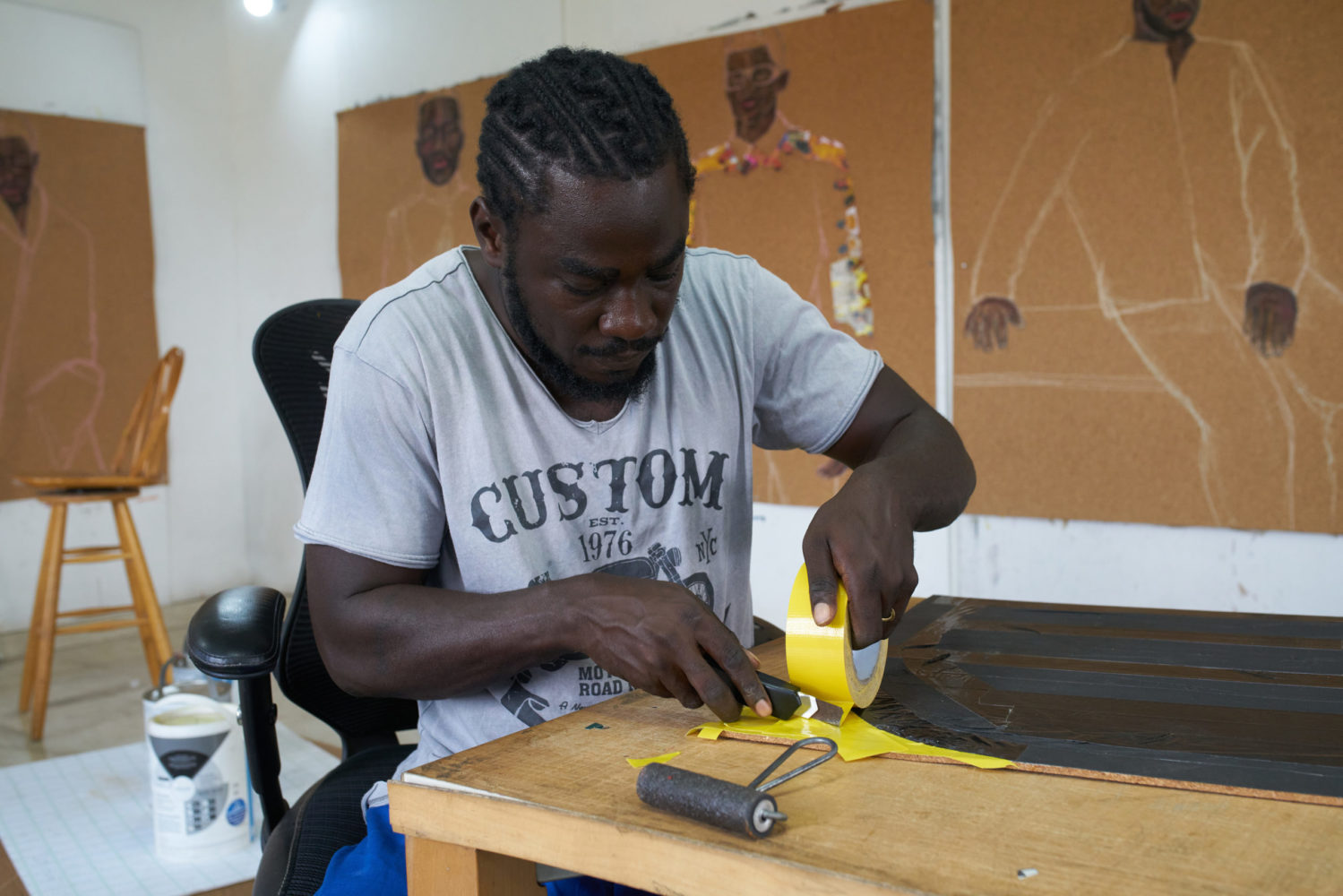
Portrait courtesy of Serge Attukwei Clottey.
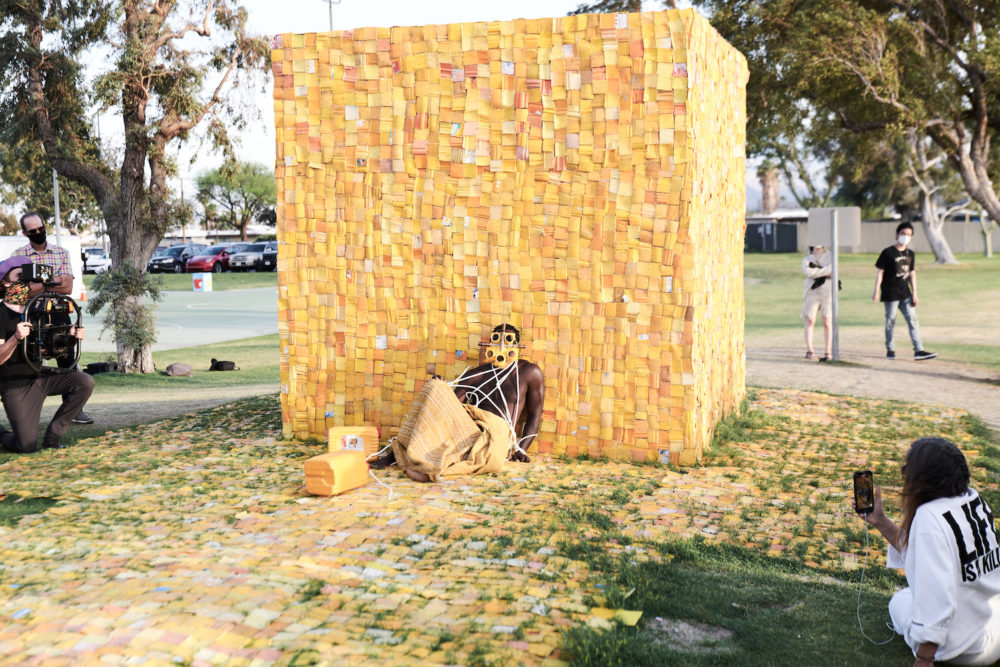
Installation view of Serge Attukwei Clottey’s “The Wishing Well” at Desert X, courtesy of the artist.
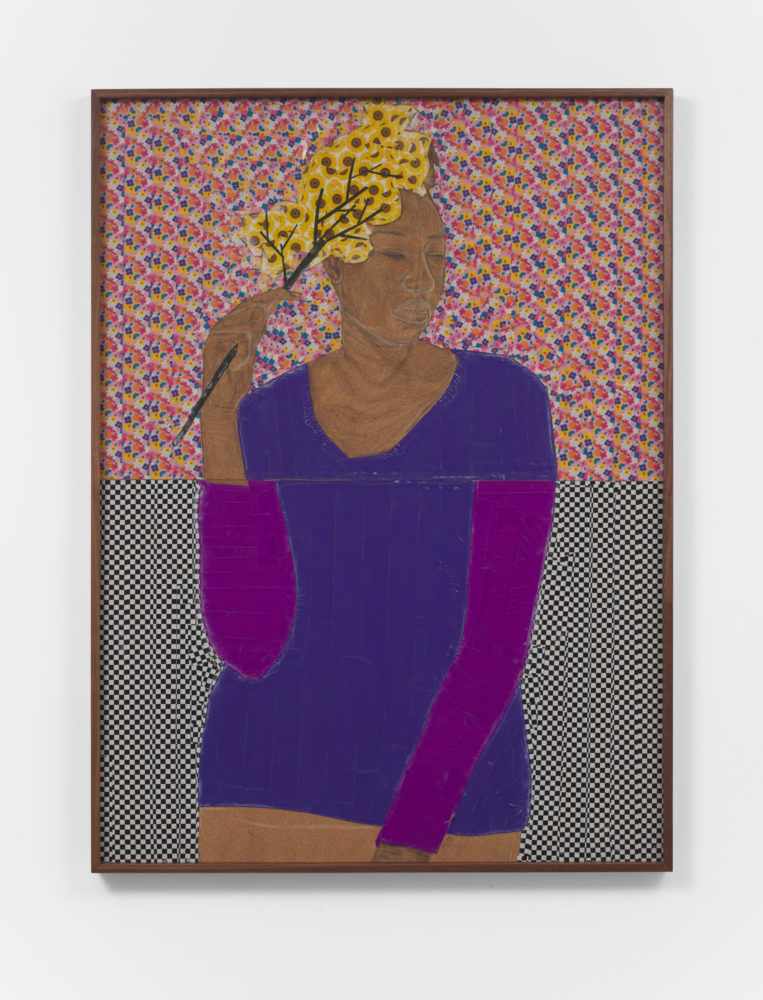
Serge Attukwei Clottey, “Yvonne Nelson,” 2020-2021, courtesy of the artist and Simchowitz Gallery.


